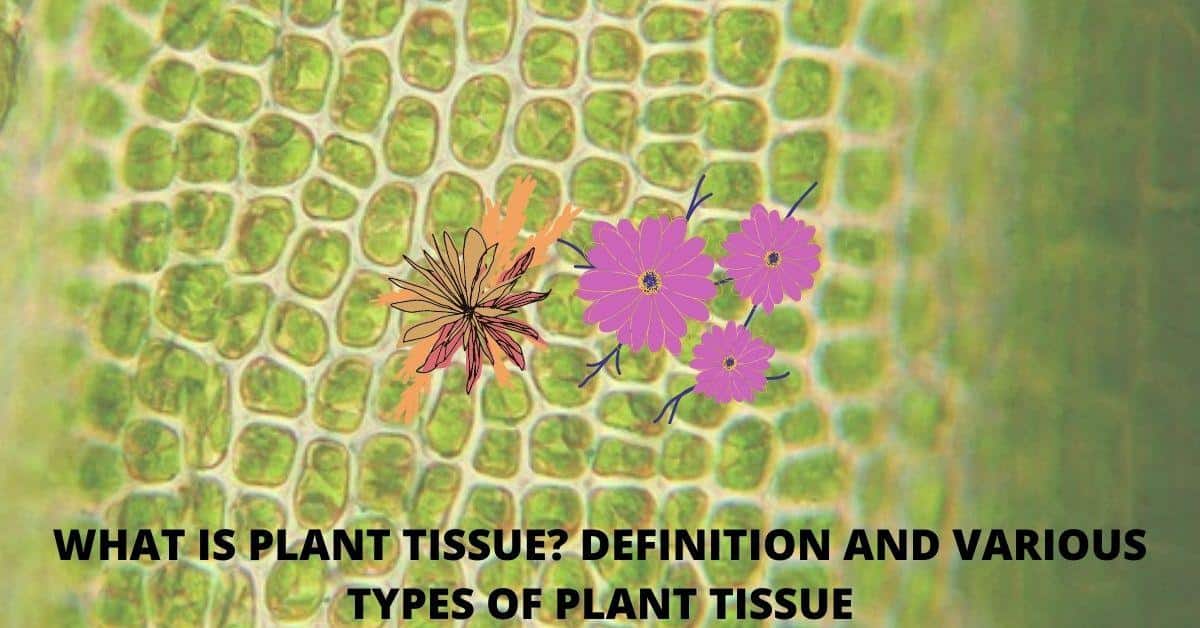All the unicellular organisms complete their biological and physiological work through their only one cell. But the multicellular organism originates from the zygote and forms multiple cells through the constant division of the zygote. Thus a group of cells consist of different size and shapes that are functioned togetherly as a unit, they are called tissue, in the plant system called Plant Tissue and in animals it is called as animal tissue. Large units of tissues that have some similar features are called Tissue Systems.
Definition
In plants, all the Tissues have similar type of function, though they are different in position or continuity in the body, this constitute a Plant Tissue System.
An old French verb ‘ Tissue’ means ” to weave”.
Types of plant Tissue
Based on the structural and functional behaviour, Plant Tissue mainly divided into two main category –
- Meristematic Tissue Or Meristem 2. Permanent Tissue
Meristematic Tissue
Definition:
A group of cells which are similar in size and shape, and consist of very thin cell walls and always actively dividing cells, they are called Meristematic Tissue.
Distribution:
In the case of Angiosperm this Tissue system is found in the tip portion of root, stem and leaf and for Pteridophyte & Gymnosperm found in the cambium portion.
Characteristics:
- The cells are very small in size, and they mostly equal in length and width.
- The shape of the cells is probably circular, oval, polygonal or rectangular.
- Present mainly in the tip portion of root, stem and leaf and always actively dividing.
- The cell wall is very thin and the secondary cell is absent.
- A prominent nucleus is present in each cell and the entire portion filled with dense cytoplasm.
- Divide by Mitosis process.
- Their arrangements are very compact thus inter-cellular space is absent.
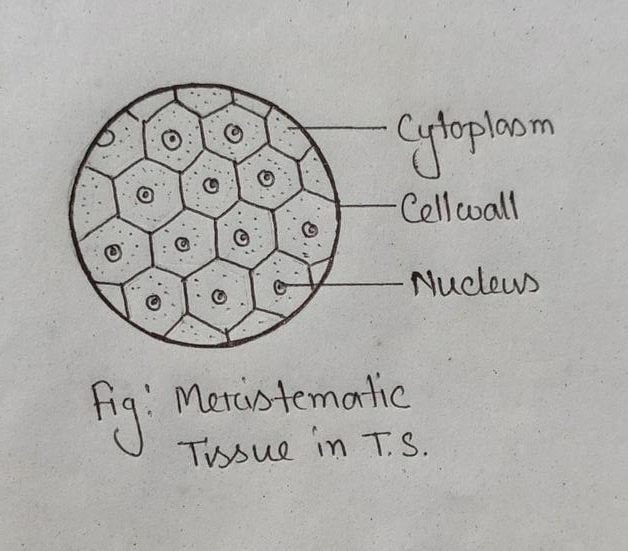
Classification of Meristematic Tissue
According to Origin
1. Primary Meristem – It is one type of meristematic tissue that promotes primary growth means growth in height of a plant.
2. Secondary Meristem – It is responsible for secondary growth means growth in thickness.
According to Location
1.Apical Meristem – This is present in the tip of root, stem and leaves that helps in linear growth of that portion, this is called apical growth.
2. Intercalary Meristem – It helps in the increase in growth located between the two Permanent Tissues. Usually present at the base of nodes, internodes, leaf and increasing the size of internodes.
3. Lateral Meristem – This type of meristem occurs usually beneath the tree bark in the form of cork cambium and in vascular bundles of dicots in the form of Vascular cambium. In this meristem cells divide only one plane that increases diameter growth means , secondary growth occurs.
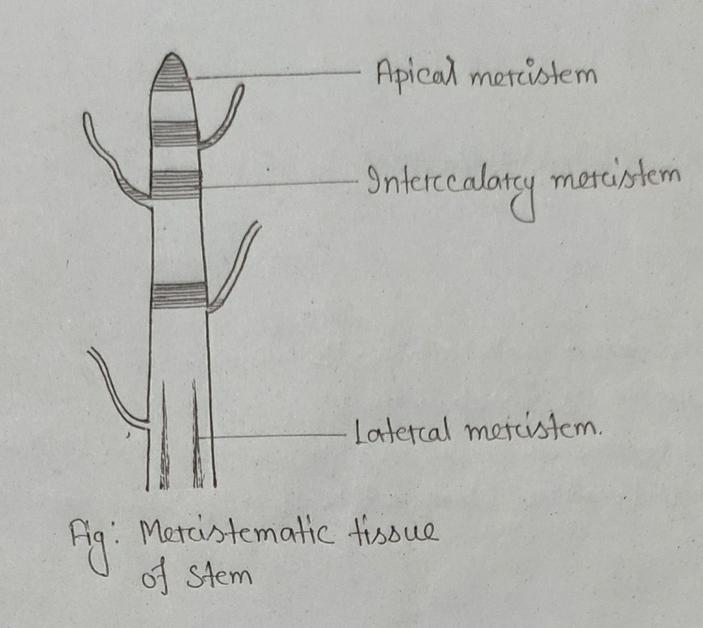
According to Function
1.Protoderm – This is one type of primary meristem in the vascular bundle that helps to produce a dermal system like epidermis.
2. Procambium – This is a meristematic tissue which is responsible for producing the new vascular tissues and vascular cambium in mature stems and roots.
3. Ground Meristem – One type of primary meristematic tissue from where ground tissue i.e. non-dermal and non-vascular tissue develop.
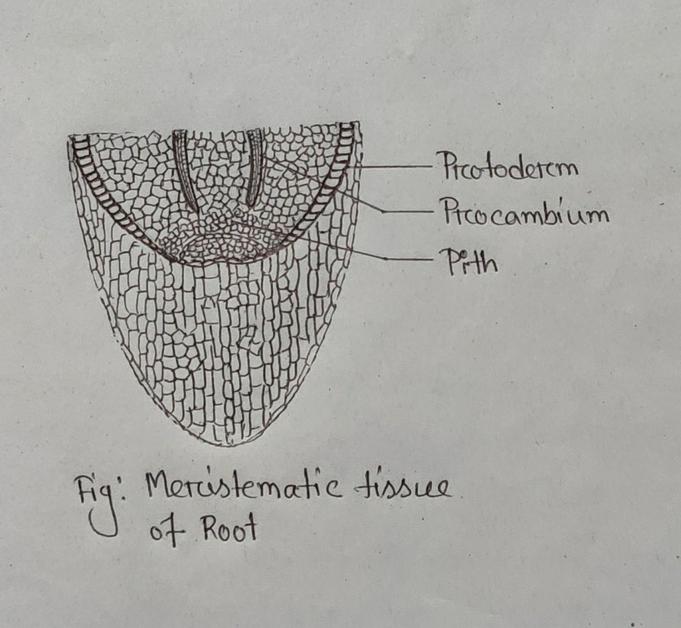
According to Cell Division
1. Mass Meristem – In this type meristem cell division occurs at three or more planes that results in an increase in mass.
2. Plate Meristem – In this type of meristem cell division occurs at two planes resulting in a flat plate of tissue. It is responsible for the increase in surface area of the leaf.
3. Rib Meristem – In this type of meristem cell division occurs in only one plane at right angles to the longitudinal axis that results in a vertical row or column of cells.
Permanent Plant Tissue
Definition: These are a group of mature cells that are produced from Meristematic Tissue and unable to divide further.
Distribution: Present every part in plants i.e. Root, stem, leaf etc.
Structure:
- Structure of the cells is very different – oval, circular, polygonal etc.
- Cell walls are often thick or thick.
- Living and non- living cells are present.
- Vacuole present.
- Permanently or temporarily unable to decide.
Classification of Permanent Tissue
Simple Permanent plant Tissue
- Parenchyma
This is the most common simple living tissue, a very thin cell wall made of cellulose, ovular Or circular in shape, that is the Parenchyma tissue.
It is distributed in all the softer portions of the plant-like epidermis, cortex, pith, pericycle of stem and leaves etc.
Structure:
- Shapes of the cell are oval, circular or polygonal.
- The cell wall is very thin and mainly made of cellulose.
- Prominent nucleus present in each cell.
- Vacuole present.
- Intercellular space present.
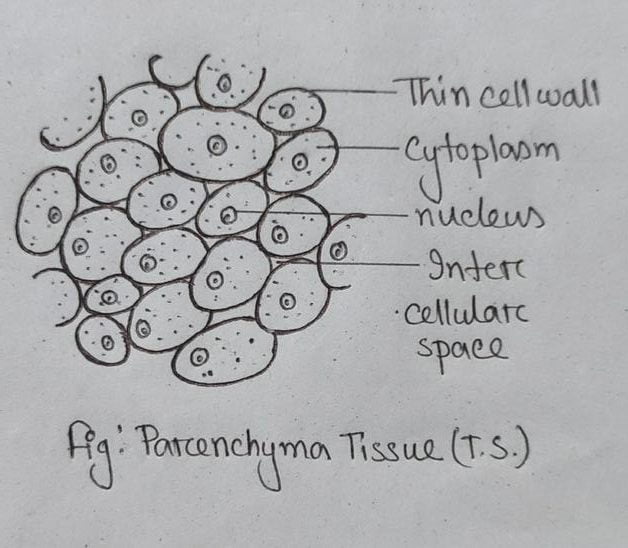
Various Types:
a. Epidermis – Epidermal cells create a protective layer around a cutinized outer wall. They are concerned with increasing in thickness and also healing of wounds and formation of adventitious roots and buds.
b. Chlorenchyma – This parenchymatous cells of leaves contain enough chlorophyll which is called Chlorenchyma that helps in Photosynthesis.
c. Aerenchyma – In some aquatic cells, the intercellular space of Parenchyma cells are quite larger and filled up with air, this type of cell called aerenchyma. This air space gives buoyancy to the plants.
d. Prosenchyma – Those Parenchyma cells are much larger than their breadth and have thick walls, they are called prosenchyma.
e. Idioblast – It is a specialised form of Parenchyma cells in which store tannin, oil, crystals of calcium oxalate.
2. Collenchyma
A simple permanent tissue which cell wall possesses thickening of cellulose and pectic substances. It acts as a supporting tissue in stems of young plants and gives mechanical support and elasticity to the plants. Found in the epidermis and vascular bundle of dicot leaf.
Structure:
- Cells are long and thick-walled consisting of cellulose and pectic substances.
- In this cell, the amount of chloroplast is lesser.
- It is the only tissue with higher refractive index due to the presence of pectin.
- Inter-cellular space is absent.
Various Types:
- Tangential – compactly arranged cells with vigorously thickened tangential walls. ex – Clerodendron, Helianthus etc.
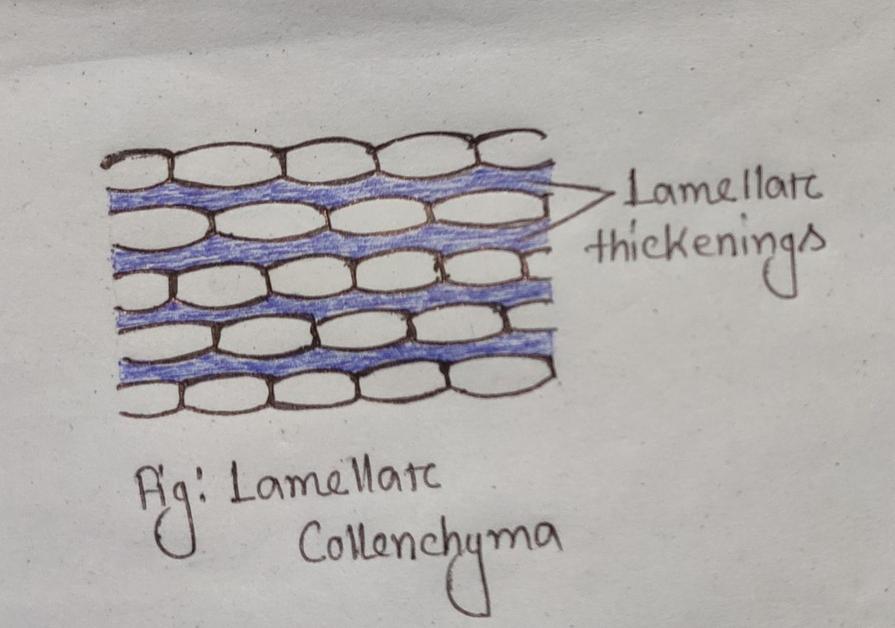
- Lacunar- Here intercellular spaces are present and thickenings are restricted to the walls of the regions bordering on space. ex- Calotropis stem.
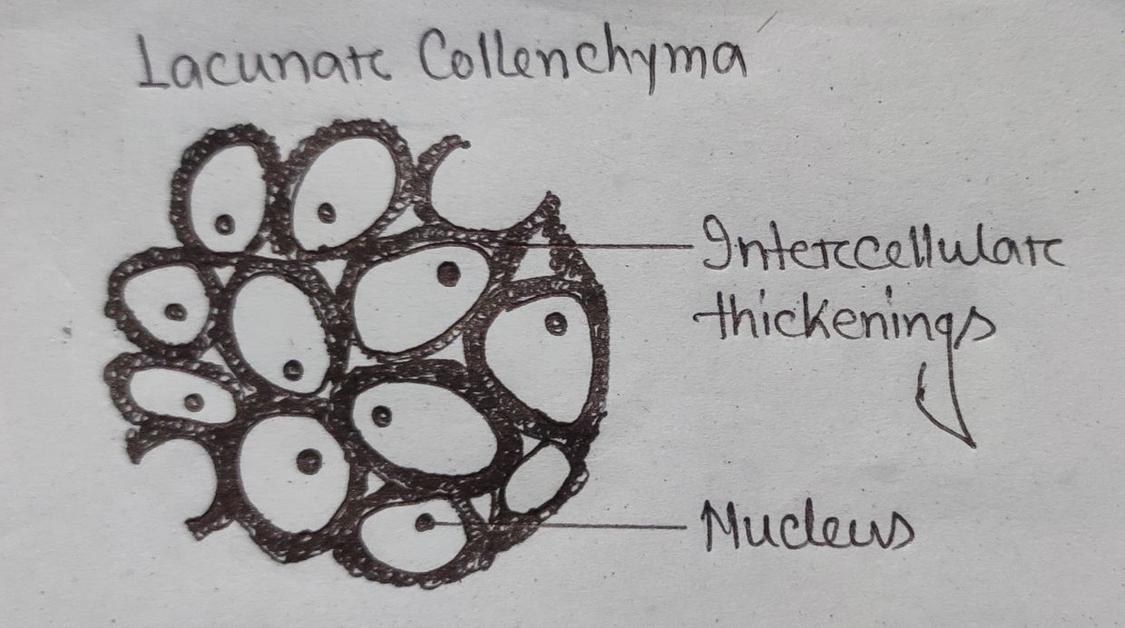
- Angular – compact tissue consisting of irregularly arranged cells without intercellular spaces.ex – Datura, Dahlia etc.
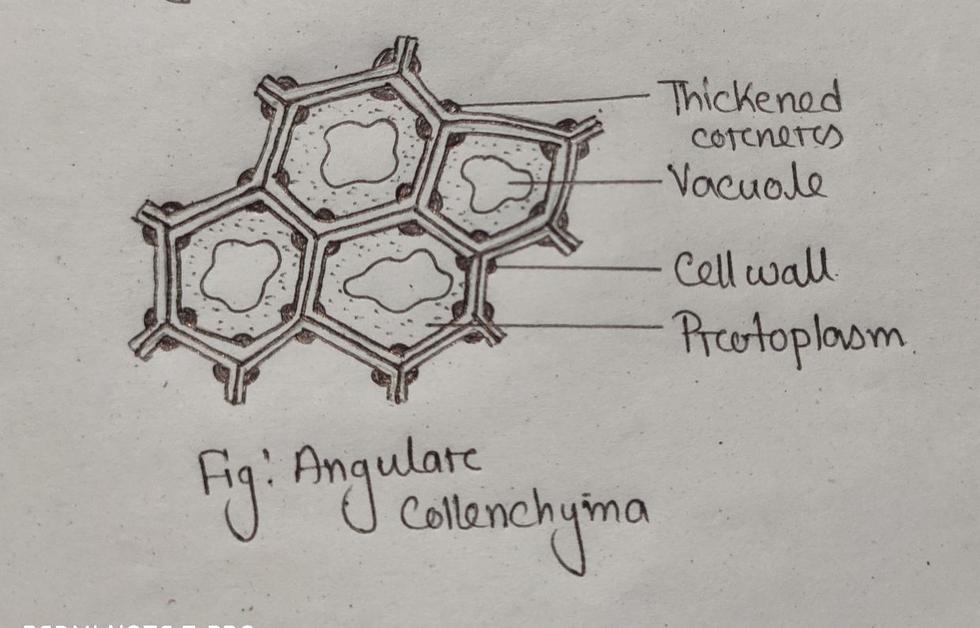
3. Sclerenchyma :
Simple permanent tissue consists of thick-walled, dead cells and negligible protoplasm.
Structure:
- The tissues of sclerenchyma are very hard and rigid in texture.
- Cells are thick-walled, various shapes and sizes.
- Provide mechanical strength.
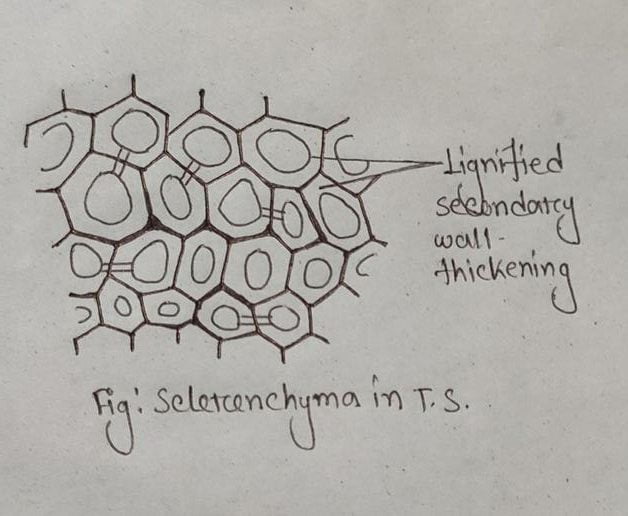
Various Types:
- Sclerenchyma fibres- Fibres are very much elongated and pointed ends and very hard, uniformly thickened and lignified cell wall present. They commonly occur as isolated bands in the cortex, in the pericycle, like patches in the leaves of monocots.
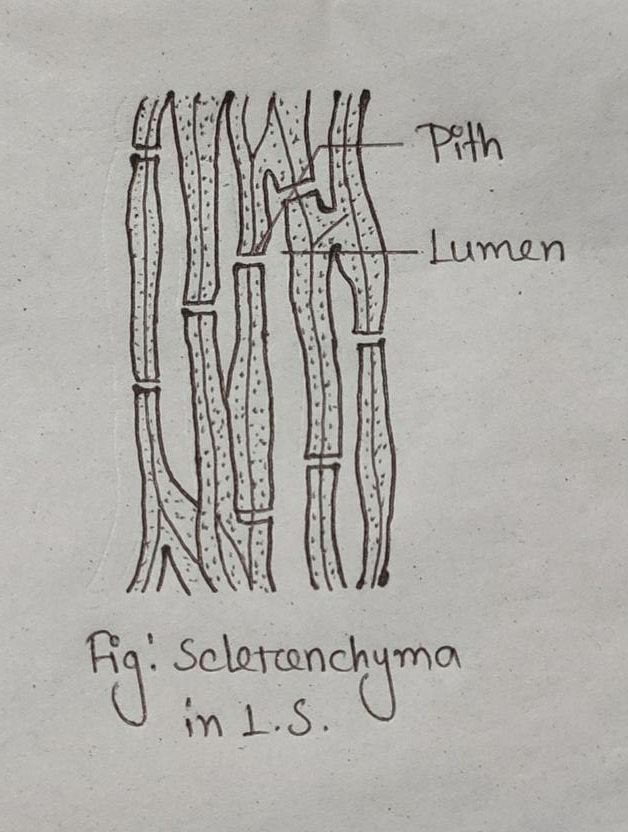
- Sclereids – cell walls of sclereids are very much thick and rigid, they are various like oval or star-shaped.
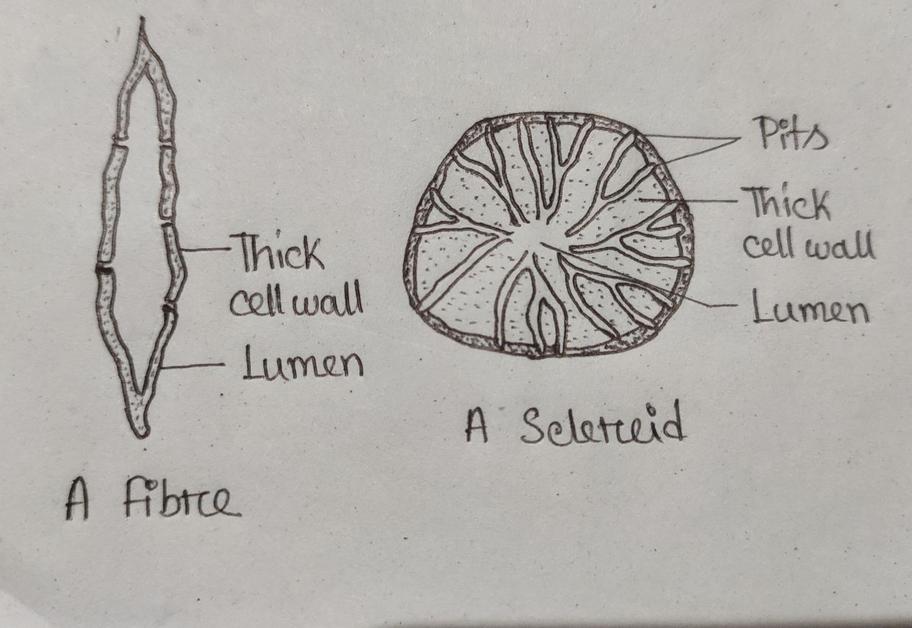
Complex Permanent Plant Tissue
1.Xylem: It is the conducting plant tissue because it is responsible for conduction of water and mineral substances from roots to the leaf. Xylem tissue is organised in a tube-like structure along the main axes of stem and roots.
Xylem consists of four parts- tracheids, trachea, xylem Parenchyma and xylem fibres. Primary xylem originates from procambium of apical meristem and secondary xylem originates from vascular cambium of the lateral meristem.
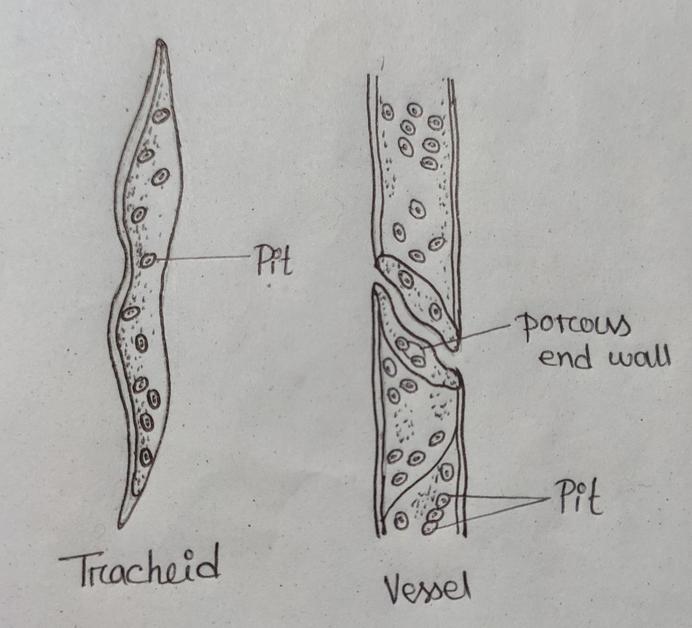
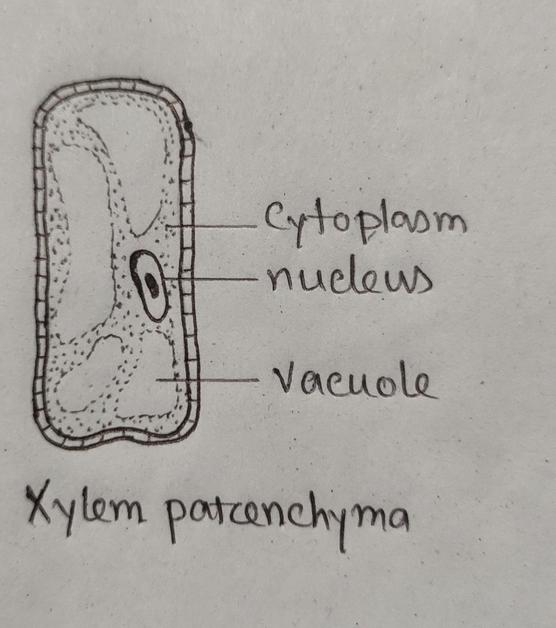
2. Phloem: Phloem acts as a ‘ plumbing system’ of a plant, carrying dissolved food substances throughout the plant. Composed of four parts – sieve tubes, companion cells, phloem Parenchyma and phloem fibres.
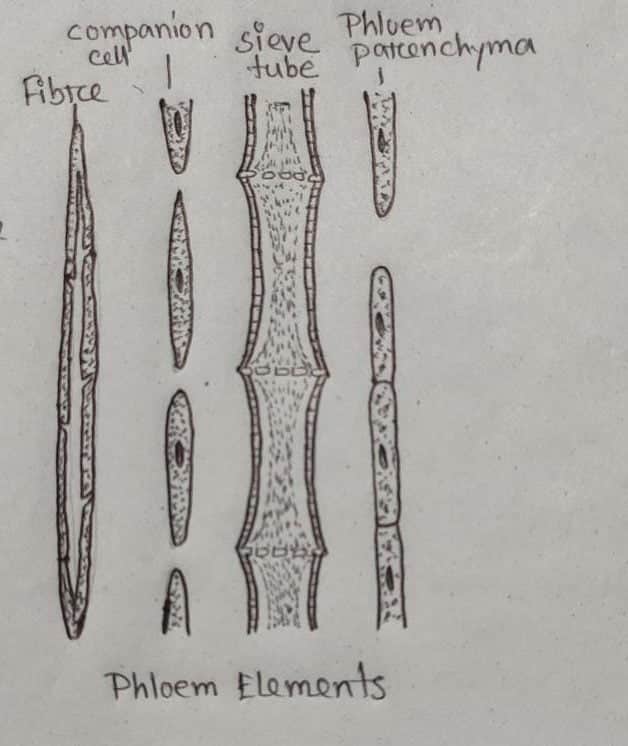
3. Special Tissue – They are modified structurally to carry out functions secretory in nature. Two types –
- Laticiferous tissue: Elongated, thin-walled, multinucleated cells that originated from the meristematic Tissues and mature with other tissues. Observed in Euphorbiaceae, Apocynaceae, Asteraceae.
- Glandular tissue: They possess various glands, that secret oil, resins, tannin, mucilage etc. The gland situated on the epidermis.
If you have any query regarding this post, then don’t hesitate to comment below.
What is a plant tissue?
In plants, all the Tissues have similar type of function, though they are different in position or continuity in the body, this constitute a Plant Tissue System.
How many types are there of a plant tissue?
Based on the structural and functional behaviour, Plant Tissue mainly divided into two main category –
1. Meristematic Tissue Or Meristem 2. Permanent Tissue.
What is Meristematic Tissue?
A group of cells which are similar in size and shape, and consist of very thin cell walls and always actively dividing cells, they are called Meristematic Tissue.
What is permanent Plant tissue?
These are a group of mature cells that are produced from Meristematic Tissue and unable to divide further.

